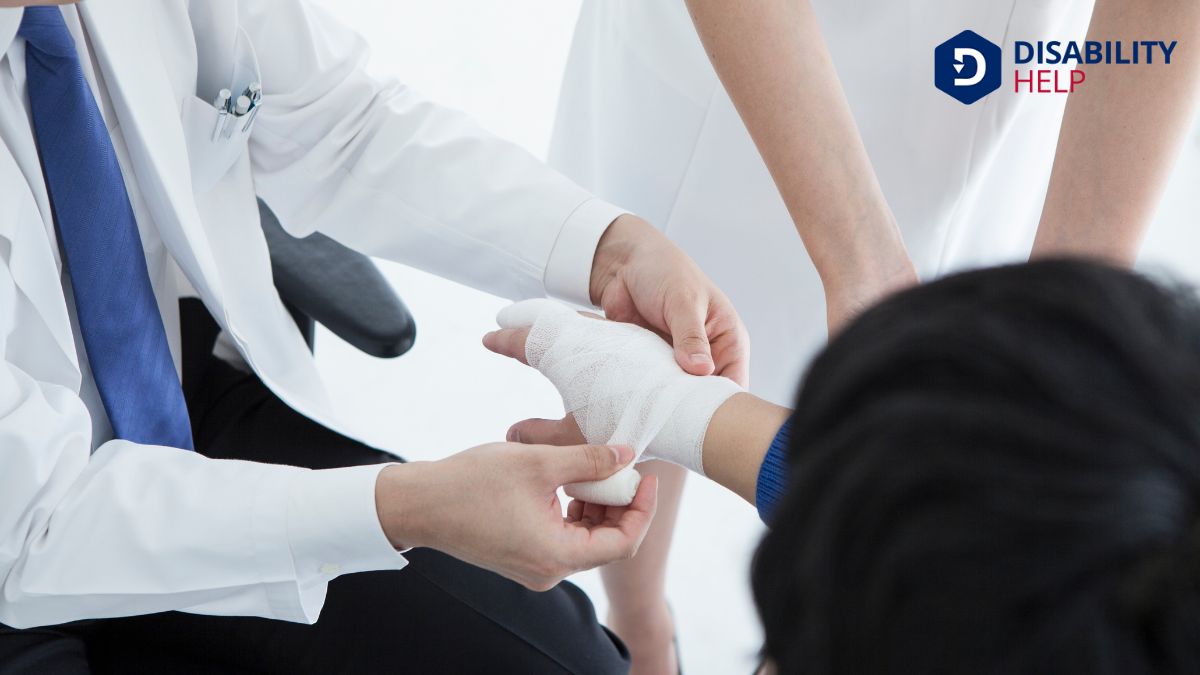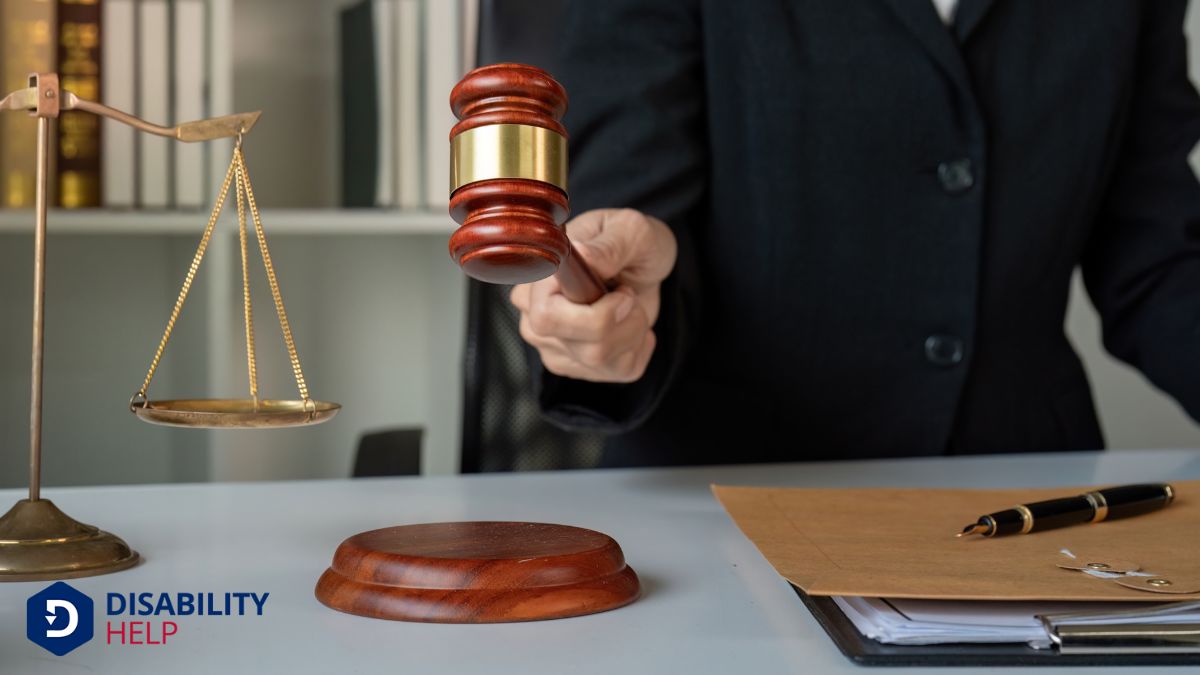When we find ourselves in an unfortunate situation where a personal injury claim might be necessary, it’s essential to take a step-by-step approach. From seeking immediate medical care to documenting every detail, the process can feel overwhelming. How do we guarantee that we're not missing anything important? By understanding each element, from evidence collection to potential legal representationThe way people with disabilities are depicted in media, culture, and politics, often influencing pub..., we can navigate this challenging task with confidence and precision. Let's explore this journey together.
Key Takeaways
- Quickly assess the situation to determine injury severity and seek medical attention for documentation.
- Collect evidence by photographing the scene and injuries and gathering witness contact information.
- Notify insurance companies and law enforcement promptly to document the incident officially.
- Prepare necessary documents like medical records and incident reports to support your claim.
- Consider engaging legal representation to navigate the claim process and evaluate potential legal action.
Assessing the Situation and Seeking Medical Attention

When accidents occur, it’s important to quickly assess the situation to determine the severity of any injuries. We must remain calm and check ourselves and others for visible harm.
Prioritizing immediate medical attention guarantees that injuries are documented and treated promptly, which is essential for our health and any future claims.
Once we've assessed the situation, let's not hesitate to call for medical help if needed. Even if injuries seem minor, seeking professional evaluation can uncover hidden issues.
This step is critical because medical records will serve as significant evidence in our personal injury claim. We should always communicate clearly with healthcare providers about our symptoms, making sure all details are accurately recorded.
Collecting and Preserving Evidence
After we've guaranteed that everyone receives the necessary medical care, it's time to focus on collecting and preserving evidence.
Let's start by taking photos or videos of the accident scene, injuries, and any property damage. Visual evidence can vividly convey the situation to those who weren't there.
Next, gather contact information from witnesses. Their accounts might be vital in supporting our claim. If there are police or incident reports available, obtain copies as soon as possible. They often contain essential details about what happened.
Don’t forget to keep all medical records and bills. These documents will help demonstrate the extent of injuries and related costs.
Finally, write down our own account of the incident while it’s fresh in our minds. This personal narrative can be invaluable.
Notifying Relevant Parties and Filing Reports
Now that we've gathered our evidence, it's essential to notify the right parties and submit the necessary reports.
We'll start by informing our insurance companies about the incident, ensuring they've all the details they need.
Additionally, we should contact law enforcement if required and submit any documentation they might request.
Informing Insurance Companies
Contacting insurance companies promptly is essential in the personal injury claim process. When we notify them quickly, we help guarantee that our claim is processed efficiently and without unnecessary delays.
It's important to gather all relevant information before making contact. This includes details of the incident, such as the date, time, location, and contact information of any involved parties.
Once we have the necessary information, we should call our insurance provider to report the incident. During this call, we need to be clear and honest about the events, guaranteeing we provide accurate details.
This transparency helps the insurer assess our claim properly. By acting swiftly and thoroughly, we can smooth the claim process and work towards a fair resolution.
Contacting Law Enforcement
With the insurance company informed, our next step involves reaching out to law enforcement to report the incident.
Doing so helps us document the event officially and guarantees all relevant parties are notified.
When contacting the police, it’s essential to:
- Provide Accurate Details: Clearly explain what happened, including the time, location, and any individuals involved.
- Request a Copy of the Report: This report will be important for our records and may be required by the insurance company.
- Follow-up: Confirm that the report is filed correctly and inquire how to access it later if needed.
Submitting Required Documentation
Once we've reported the incident to law enforcement, it’s vital to gather and submit all necessary documentation to support our personal injury claim. This includes obtaining copies of the police report, medical records, and any eyewitness statements.
We should also notify relevant parties, like our insurance company and any involved third parties, promptly. Filing accurate reports guarantees all details are captured, supporting our claim's legitimacy.
Let's also keep records of all communications, including emails and letters related to the incident. If possible, documenting the scene with photos or videos can strengthen our case.
Timely submission of these documents is critical; it prevents delays and helps us build a solid foundation for our claim. Staying organized is key throughout this process.
Calculating Damages and Understanding Compensation
Calculating damages and understanding compensation in a personal injury claim can initially seem intimidating, but breaking it down step by step makes the process manageable.
Let's focus on the key components we need to evaluate:
- Medical Expenses: Calculate all costs related to medical treatment, including hospital bills, medication, and therapy. These are often the most straightforward to quantify.
- Lost Wages: If our injury caused us to miss work, we'll need to calculate the income we've lost. This includes both past and future earnings if our ability to work is affected long-term.
- Pain and Suffering: This is less tangible but just as important. It compensates for physical pain and emotional distress. We should keep detailed records and possibly consult with a professional to accurately assess this.
Understanding these components helps us effectively pursue fair compensation.
Engaging With Insurance Companies
Having a clear understanding of our damages and compensation, we can now interact with insurance companies with confidence.
It's essential to communicate clearly and assertively. When we contact the insurer, let's provide a concise account of the incident and our injuries, sticking to the facts.
We should have all necessary documents, like medical records and repair estimates, ready to support our claim. It's important to remain patient yet firm, as insurance adjusters might attempt to minimize our claim.
We should keep detailed notes of all communications, noting dates, times, and the names of representatives we speak with. If they offer a settlement, let's carefully evaluate if it aligns with our calculated damages.
Considering Legal Representation and Court Action

As we move forward with our personal injury claim, let's consider whether hiring a lawyer is the right choice.
We'll need to familiarize ourselves with court procedures and carefully weigh the potential risks and benefits of legal action.
Understanding these elements will help us make informed decisions about our next steps.
Evaluating Legal Representation Options
When evaluating legal representation for a personal injury claim, it’s important to weigh your options carefully to guarantee you make an informed decision.
Let's explore the key factors to reflect on:
1. Experience: We should prioritize attorneys with a proven track record in personal injury cases. This expertise increases our chances of a favorable outcome.
2. Communication: It's imperative that the lawyer communicates effectively and keeps us informed throughout the process.
We must feel comfortable asking questions and receiving clear answers.
3. Fee Structure: Understanding the fee arrangement is critical. Many personal injury lawyers work on a contingency fee basis, meaning they only get paid if we win.
This can ease financial concerns.
Understanding Court Procedures
Once we’ve chosen our legal representation, it’s time to familiarize ourselves with the court procedures involved in a personal injury claim. Our attorney will guide us through the steps, ensuring we grasp what's happening at each stage.
First, we’ll file a complaint outlining our injuries and the damages we're seeking. The defendant will then respond, either agreeing to settle or disputing our claims.
If they dispute, we'll enter the discovery phase, where both parties exchange evidence and information. Throughout this process, our attorney will prepare us for depositions and possible court appearances.
Comprehending these procedures helps us stay informed and reduces anxiety. With our legal team’s support, we’ll navigate each step confidently, knowing they’re advocating for our best interests.
Weighing Risks and Benefits
Steering the decision to pursue legal action involves weighing the potential risks and benefits carefully. We must reflect on the value of hiring an attorney and the likelihood of success in court.
Lawyers provide expertise and guidance, but they come with costs. It’s important to contemplate:
- Cost: Legal fees can be significant; is the potential compensation worth it?
- Time: Court cases can drag on, requiring our patience and time commitment.
- Outcome Uncertainty: Even with a strong case, outcomes aren’t guaranteed, which could result in disappointment.
Balancing these factors helps us decide if pursuing legal action is the best path.
Conclusion
In summary, we must remember that filing a personal injury claim involves several essential steps. Let's promptly assess the situation and prioritize seeking medical attention. We'll gather and preserve all necessary evidence, notify the relevant parties, and file the required reports. Calculating damages and understanding potential compensation is key, as is engaging effectively with insurance companies. Finally, let's consider legal representation to help us navigate the complexities and guarantee our interests are well-protected throughout the process.






